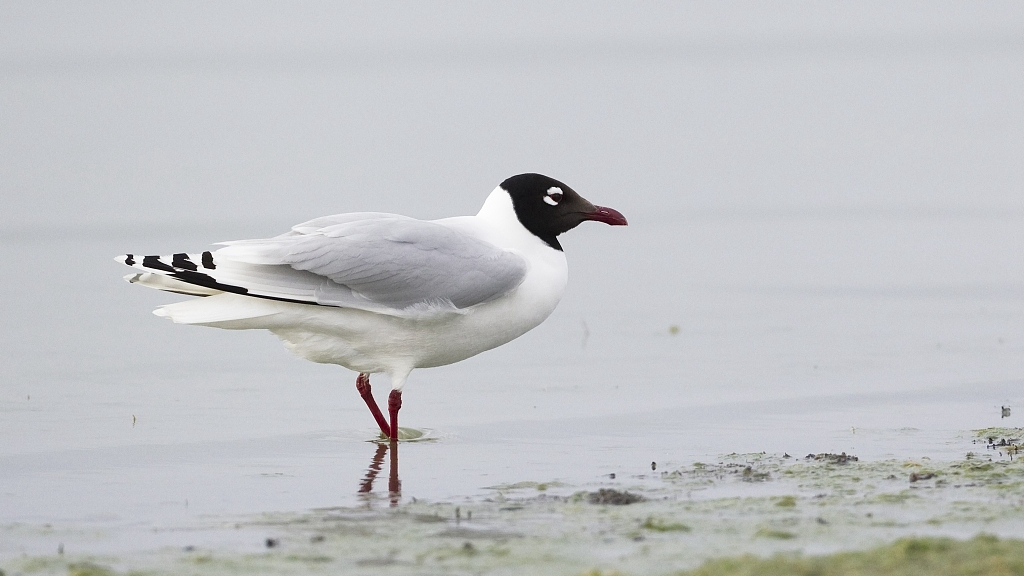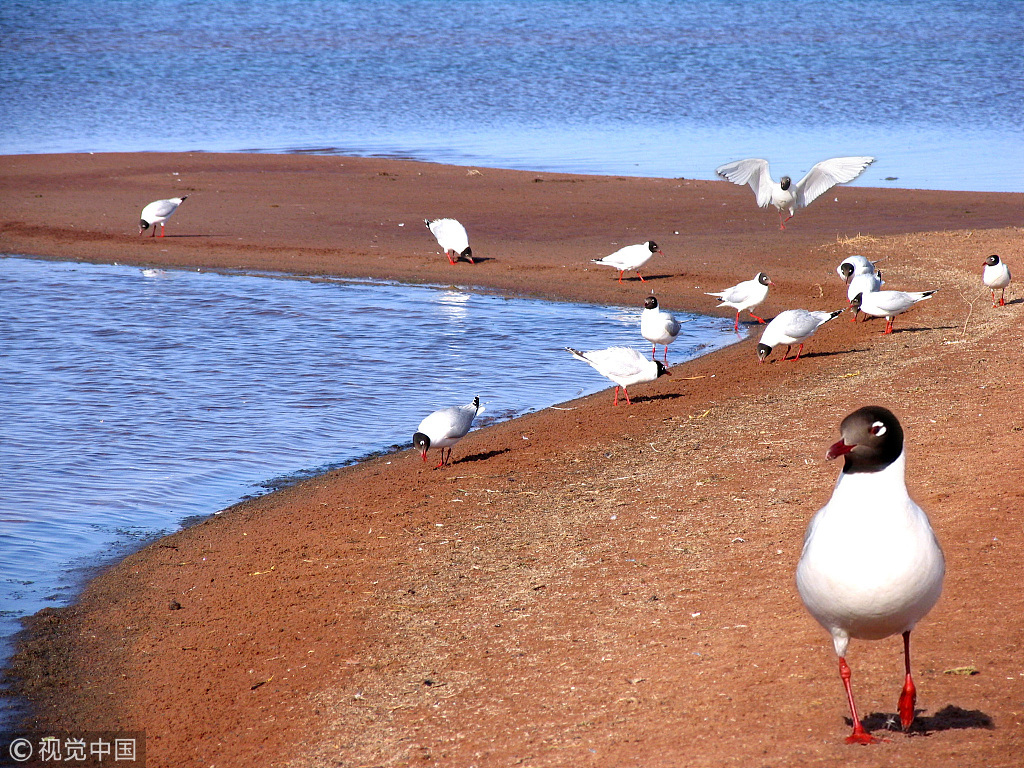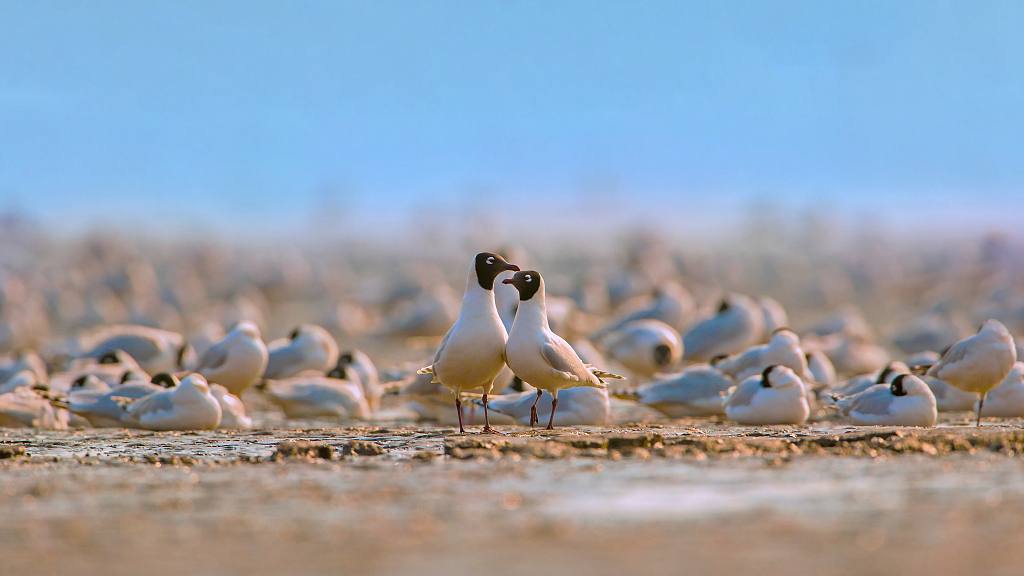
Animal
14:47, 11-Apr-2019
North China wetland welcomes large number of relict gulls
CGTN
00:42

More than 800 relict gulls, the largest number in 13 years, have recently arrived at the Erdos wetland in north China's Inner Mongolia Autonomous Region, indicating the wetland has initially restored its ecological function through continuous improvement.
The Erdos wetland was included in the list of international important wetlands by the Convention on Wetlands, also known as the Ramsar Convention, an intergovernmental treaty that provides the framework for the conservation and wise use of wetlands and their resources, in 2002. It is also the first important international wetland designated to protect the ecological environment of relict gulls and their habitats.
Relict gulls are seen foraging and wandering on the wetland. They are also seen unfolding their wings, stretching their legs and chirping.

Relict gulls at Hongjiannao Lake, Shaanxi, China. /VCG Photo
Relict gulls at Hongjiannao Lake, Shaanxi, China. /VCG Photo
"There has been a sharp decline in the number of relict gulls and they haven't bred here since 2006. Now, with the restoration of the wetland in recent years, especially this year, the number of the bird is increasing exponentially and they are also likely to breed here this year," said Ren Yongqi, head of the Dongsheng Management Station, Erdos Relict Gull National Nature Reserve.
The relict gull, which is under national first-class protection, prefers to inhabit saltwater and freshwater lakes in open plains and desert or semi-desert regions.
Erdos city has taken a series of measures to tackle threats to the wetland, such as replenishing water sources and dredging. At present, the restored water area in the wetland has reached seven square kilometers, and the once disappeared island in the middle of the lake has reappeared on the water surface.

Relict gulls. /VCG Photo
Relict gulls. /VCG Photo
With the steady expansion of the wetland, the original biodiversity has been gradually restored.
"We will continue to replenish water to expand the area of wetland in accordance with our restoration plan so as to make the wetland ecology better and better," said Ren.
(Cover images via VCG)
(If you want to contribute and have specific expertise, please contact us at nature@cgtn.com.)

SITEMAP
Copyright © 2018 CGTN. Beijing ICP prepared NO.16065310-3
Copyright © 2018 CGTN. Beijing ICP prepared NO.16065310-3